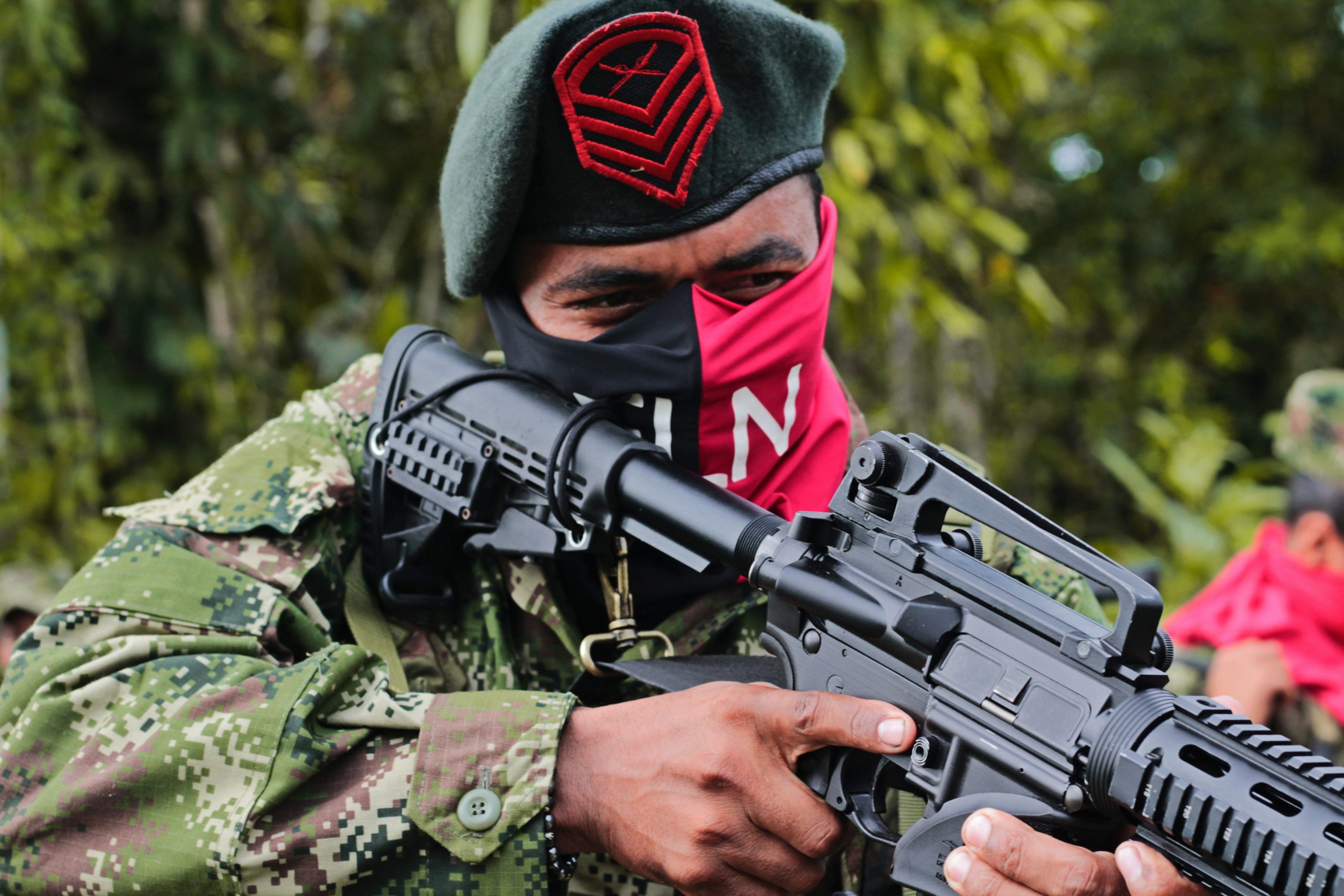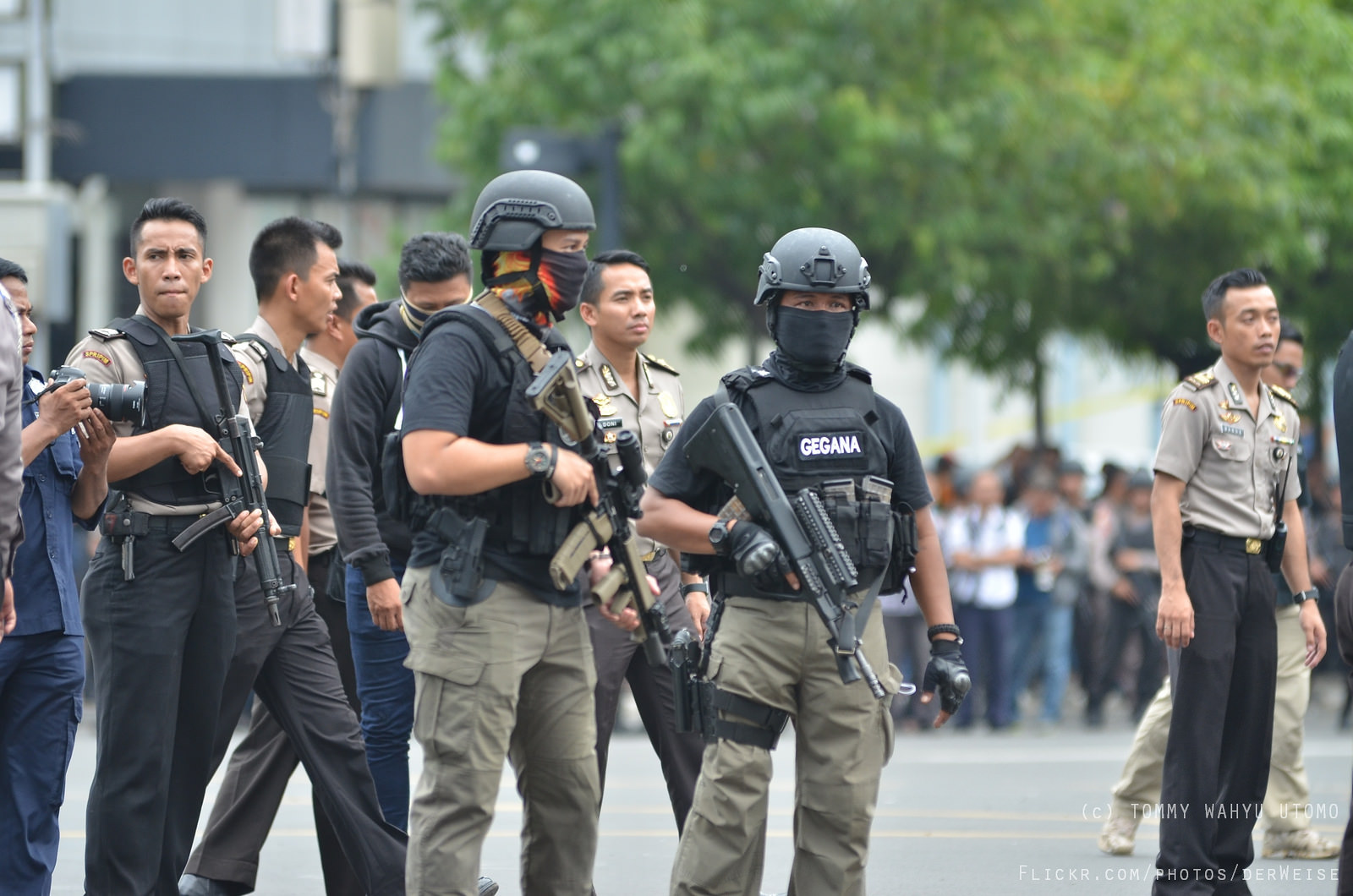Bombs in a major metropolitan center, explosives found on trucks and next to a school, roads blocked by armed groups, and street battles between heavily armed rebels and the police—these were some of the headlines in the border region of Norte de Santander, Colombia last week. The Ejército de Liberación Nacional (ELN) and the Ejército Popular de Liberación (EPL) both sought to demonstrate to the national government how strong they remain by imposing a “national armed strike” (paro nacional armado) between February 14 and February 17.
The ELN, now the longest-surviving rebel army in Colombia following the demobilization of the Fuerzas Armadas Revolucionarias de Colombia-Ejército del Pueblo (FARC-EP) in 2016, has for a generation been powerful and disruptive in a few regions of the country, particularly on the Venezuelan border, but has recently sought to move into new regions and reposition itself as a nationally relevant actor. The EPL, also known as the Pelusos, is a faction of the EPL that demobilized in the early 1990s, yet has reconstituted itself as a criminal organization on the border in the Catatumbo region.
What explains the decision to call an armed strike now and to ramp up violence? Three factors likely motivated the decision. First, the safe haven provided to the ELN and EPL by the Maduro regime in Venezuela has made attack and retreat dynamics much easier for armed groups to pursue. The ELN’s expansion in Venezuela, given its close relationship with corrupt members of the Venezuelan Army, has facilitated such actions. The ELN could be calculating that highlighting the porousness of the border could induce the Colombian Army to make incursions into Venezuela, thereby precipitating a direct armed confrontation between the two states in ways that would degrade the Colombian military’s capacity to respond to armed group threats.
Second, the demobilization of the FARC-EP (despite the existence of dissident factions) means that the ELN has benefitted from decreased armed group competition, and has been able to fill some governance gaps left by the FARC-EP. Establishing a causal relationship between the FARC’s disappearance and the ELN’s resurgence is difficult, but the ELN’s growth has been impressive: according to recent estimates by the Armed Forces (reported by Fundación Ideas para la Paz), in 2017, the ELN had only 1,000 members while in 2018, they had more than 4,000. This exponential expansion has been accompanied by significant investments in manpower and increased confrontations with state forces in areas beyond the group’s traditional areas of strength in northeast Colombia.
Third, peace negotiations between the government and the ELN have been formally suspended under the presidency of Iván Duque. The government conditioned the start of talks on the group’s halting criminal activities, particularly kidnapping; the talks are, in other words, effectively dead. The armed strike, along with the violence the group has unleashed, demonstrate to the government the perilous path of failing to restart talks while simultaneously showing the civilian population the power the group retains.

What are the likely consequences of the armed strike? As Yogi Berra famously quipped, “it’s tough to make predictions, especially about the future,” but we can venture a guess as to how national and regional governments are likely to respond, and what this might mean.
First, the armed strike may have succeeded in finally calling national attention to the complex mix of coca cultivation, drug trafficking, forced recruitment into armed groups, and smuggling of black and gray market goods that afflicts the Catatumbo and surrounding regions. The visit of Defense Minister Holmes Trujillo to the region last week—which resulted in commitments to beef up border security, increase military patrols in and around cities, and undertake coordinated actions with the Colombian migration authorities to deport or expel those with criminal records—showed that the government knows it needs to get serious. But without bilateral cooperation with Venezuela—a prospect that is politically inviable—these efforts are likely to founder.
Second, the growth of the ELN, which is connected in part to the profitability of criminal markets in Colombia, likely means that the state will continue to struggle to establish a meaningful presence in the sub-regions where the ELN has either recently made in-roads (i.e., in Chocó, on the Pacific Coast) or has consolidated its historic control (i.e., Arauca and Norte de Santander). Generations of state neglect in these regions, and the cooptation of the state by criminal groups; favorable climatological conditions for coca cultivation; the presence of illegal gold mines; and proximity to a failed state (Venezuela) and ports for exporting illegal goods, all make dramatic transformations sadly unlikely. The armed strike makes more armed confrontations likely, and is unlikely to prompt sustainable social investments or the provision of state-provided justice services, which are what have the greatest chance of isolating armed groups.
Colombia may be entering a new and dangerous phase where insurgents again attempt to demonstrate their ability to establish a presence in mid-sized Colombian cities. The appearance of multiple bombs in Cúcuta—Colombia’s sixth-largest city—is either an anomaly limited to the extraordinary occurrence of the armed strike, or a sign of things to come. For the sake of a long-suffering population also coping with an acute migration crisis from Venezuela, the government should pursue actions that avoid a new equilibrium of escalatory violence.







